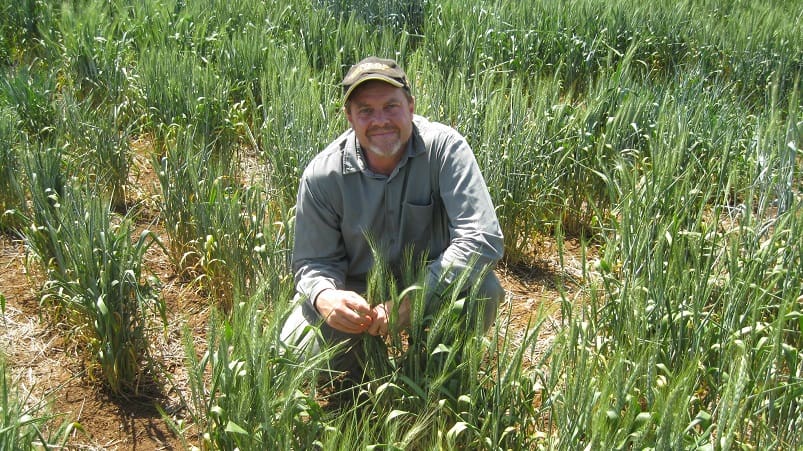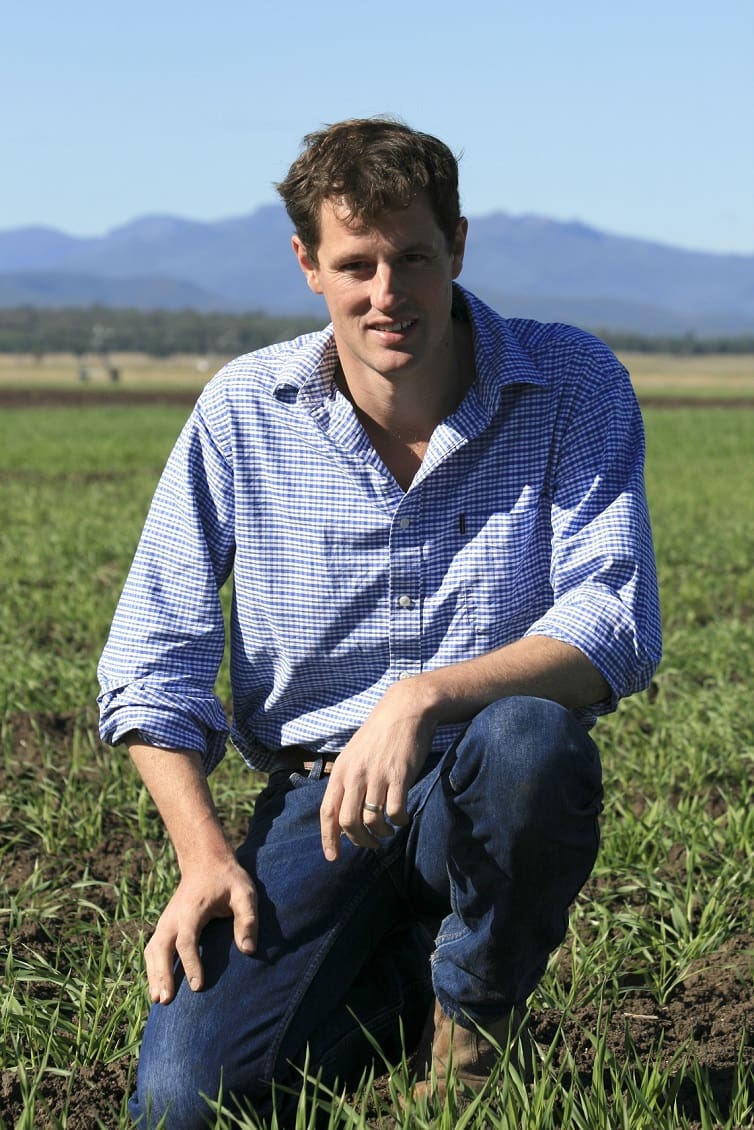
NSW DPI pathologist Steven Simpfendorfer
AN innovative investment which will improve the efficiency and reduce the cost of identifying and tracking the genetic traits for crown rot tolerance and resistance is being labelled a potential game changer for grain growers battling the disease across Australia.
Caused by the fungus, Fusarium pseudograminerarum, crown rot is a significant disease for winter cereals such as wheat, barley, durum, triticale and oats, costing the nation’s grains industry an estimated $404 million in lost yield annually.
The Grains Research and Development Corporation (GRDC) has just signed a contract with Australian Grain Technologies (AGT) in partnership with experienced pathologist Steven Simpfendorfer from New South Wales Department of Primary Industries (NSW DPI) and Alan McKay from the South Australian Research and Development Institute (SARDI) to deliver high-throughput, repeatable, accurate, low cost phenotyping.
Phenotyping is the measurement of plant characteristics and in this instance will involve the accurate identification, selection and tracking of crown rot resistant or tolerant germplasm throughout the breeding process.
Lack of resistant varieties
GRDC Genetics and Enabling Technology general manager, Nicole Jensen, said while progress had been made in the battle against crown rot, the disease was still a major constraint for growers and there were no varieties currently rated as tolerant or resistant available to industry.
“Currently, there are limited control options for crown rot,” Dr Jensen said.
“No effective chemical or biological options have been developed to date. But GRDC invested research has helped provide growers with improved understanding for management of the disease with key tools such as PREDICTA B® tests to identify and assess inoculum levels, rotational strategies with non-host crops and stubble management.
“Another component of a sustainable option for addressing crown rot is the development of high-yielding resistant and tolerant cultivars.”
Overcoming bottleneck
Dr Jensen said this GRDC investment would address a current bottleneck for genetic improvement for crown rot through the development of new higher throughput, robust phenotyping methodologies to provide the ability to accurately and efficiently select for crown rot tolerance and resistance in breeding programs.
“The technology developed will significantly improve our ability to effectively track and select specific genetic material within breeding programs,” she said.
“The genetic resources we have for crown rot resistance and tolerance can easily be lost in the shuffling of genetics in breeding programs.
“This investment will improve this by developing methods that allow commercial breeding companies to cheaply and accurately measure crown rot.
“The innovative approach that will be used for phenotyping is an application of technology that will be able to be used for tracking and selecting germplasm by breeding companies for a range of traits, not just crown rot.”
Dr Jensen said having AGT, a commercial breeding company, lead the project in partnership with two of the most respected specialists in crown rot research – Steven Simpfendorfer and Alan McKay – was a win for industry.
“Having AGT involved in the development of this phenotyping methodology will increase the chances of the new technology being adopted by plant breeders,” she said.
“A key part of this project will include regular engagement and consultation with industry, with resources developed as part of this work being made freely available to breeders and researchers.”
High-yield varieties

Phil Davies
AGT chief executive officer, Haydn Kuchel, said his organisation was looking forward to being involved in this important research.
“The methods that we develop out of this project need to be cheap and easy for any breeder in the country to adopt,” Dr Kuchel said.
“Growers ultimately want varieties that can achieve higher grain yields in the presence of crown rot, and the results of this project will help us develop those varieties.”
Dr Kuchel said AGT were pleased to announce they had recruited well known young scientist Phil Davies to lead the crown rot project team.
“After more than 10 years’ experience working with crown rot in wheat, Dr Davies will be joining AGT as a wheat breeder and will bring a wealth of knowledge to the management of this research project.”
Dr Jensen said the project aimed to generate a tenfold improvement in the throughput of phenotyping, as well as a tenfold reduction in cost.
“This represents a major gain for grain growers. It will allow commercial breeders to screen vast amounts of germplasm more effectively at significantly reduced costs,” she said.
“In turn, this means that there will be increased adoption and flow through in breeding programs of the genetics for improved crown rot resistance and tolerance that were developed in previous GRDC pre-breeding investments.”
Ongoing search
GRDC is also in the process of negotiating an additional investment which will continue the search for new genetic sources of resistance and tolerance with large effect.
“By 2025 we would like cereal breeders to have the tools to efficiently improve the resistance of wheat to crown rot by at least two rating scores and reduce the yield loss by crown rot pressure by at least another seven per cent within their breeding programs,” Dr Jensen said.
The new investments in crown rot will build on recent and ongoing GRDC research into crown rot across a range of genetics and farming systems projects. These projects include:
- Integrated genetic solutions to crown rot in wheat
- Durum crown rot benchmarking for improved grower access to durum varieties with greater crown rot resistance
- Genetic solutions to crown rot in barley
- Improving grower surveillance, management, epidemiology knowledge and tools to manage crop disease in southern NSW
- National crown rot epidemiology and management program
- Maintaining profitable farming systems with retained stubbles in SA’s Upper North
- Maintaining profitable farming systems with retained stubble in NSW’s South West Slopes and Riverina.
Source: GRDC

HAVE YOUR SAY